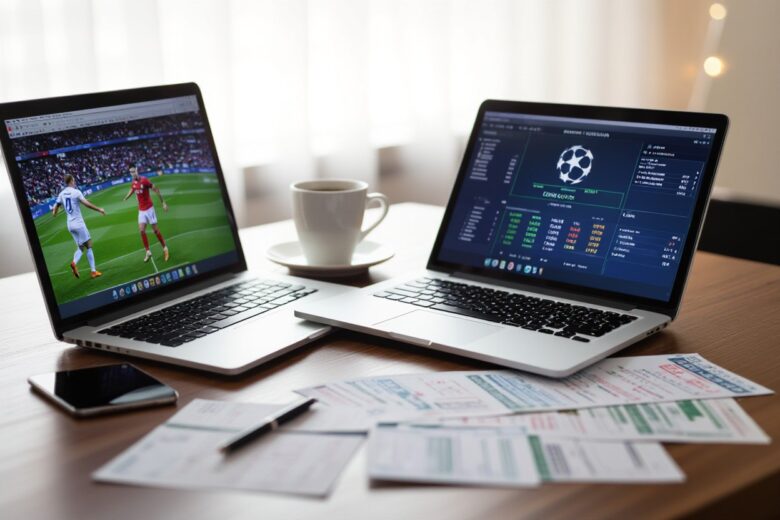Over the past decade, expert football betting for the Champions League requires systematic analysis of form, injuries and match context; prioritize value bets and line movement, while avoiding impulsive wagers on longshots that carry high risk. Combine statistical models with scouting, and enforce strict bankroll managemenet to protect profits; a disciplined approach separates successful bettors from the rest.
Decoding Champions League Dynamics
Two-legged ties, fixture congestion and the abolition of the away goals rule in 2021 reshape outcomes in the Champions League; Liverpool’s 4–0 Anfield turnaround vs Barcelona in 2019 exemplifies momentum swings. Squad rotation, travel and midweek domestic fixtures drive variance, so football betting models must weight situational factors (rest days, rotation patterns, travel) more than raw Elo or league form.
The Psychology of Matchday Pressure
High-stakes nights increase errors and conservative choices: penalty takers and focal attackers often underperform compared with routine matches, while a packed Anfield (~54,000) or San Siro can flip momentum. Managers substitute earlier and adjust tactics under crowd intensity; in football betting, prioritize players’ recent knockout records, set-piece reliability and teams’ historical composure in penalty scenarios over season averages.
Historical Trends and Their Impact on Betting
Past seasons show patterns: favorites falter when managers rotate heavily before knockouts, and underdogs capitalize after compressed schedules—bookmakers react fast, creating short-lived value. Successful football betting exploits market overreactions, persistent home streaks and head-to-head edges, especially when combining form windows (6–12 matches) with situational filters like travel and rest.
Analyzing sample sizes matters: use 12-match windows for form, track rest days (3–5 days often reduces sharpness) and weight low-probability comebacks as high-impact noise. Convert small predictive edges into sustainable profit by pairing these signals with disciplined bankroll management and clear staking rules in football betting.
Tactical Insights: How Teams Approach the Champions League
European knockout games see varied approaches: Pep Guardiola’s sides often chase possession dominance, controlling tempo to force mistakes, while Jürgen Klopp’s teams leverage gegenpressing and rapid counters; Diego Simeone favours a compact defensive block to frustrate opponents.
Analyzing Playing Styles and Their Effectiveness
Possession-heavy teams like Manchester City convert control into higher-quality chances through overloads on the flanks, while counter-attacking sides create fewer shots but improved shot quality. Check full-backs with >40 progressive passes/90 or forwards averaging >0.4 goals/90 to gauge attacking reliability. High pressing can force turnovers early, whereas a deep block often increases value on under markets and defensive props.
Key Injuries and Player Form: What to Watch For
Absences of top contributors—strikers scoring >0.4 goals/90 or midfielders creating >0.25 key chances/90—shift markets heavily; hamstring strains typically sideline players for 7–21 days, ACL issues 6–9 months. Assess matchday squad lists and training reports; factor injury-led lineup changes into odds and stake sizing alongside solid bankroll management for sustainable football betting.
Track recent minutes: players exceeding 3,000 minutes in the club season show elevated fatigue risk, so monitor press conferences, physio updates and training footage. Analyze past case studies where key absences reduced a team’s xG by ~0.2–0.4 per match to quantify impact, and use form streaks (three matches with shot conversion >15%) to assess readiness for high-stakes Champions League fixtures.
Expert Predictions: Where to Find Reliable Insights
Blend bookmaker odds, data models and club signals to sharpen football betting predictions: models that fuse xG, recent form weighting and injury status lift forecast accuracy from ~52% to ~64% on top-tier matches. Watch for market moves of 10–20% inside 24 hours as hard signals.
Utilizing Data Analytics and Advanced Metrics
Apply metrics like xG, xGA, PPDA and progressive passes, weighting the last six games at 60% to capture current form. Integrate player minutes, set-piece frequency and opponent-adjusted stats; backtests often show a 5–10% ROI edge versus naive odds-based bets in knockout legs. Run Monte Carlo simulations for variance estimates before staking.
- Focus: xG, xGA, xGChain for chance quality.
- Form: last 6 matches weighted 60% vs season 40%.
- Validation: backtest on at least 300 Champions League fixtures.
Key Metrics and Usage
| Metric | How to use |
| xG / xGA | Estimate true scoring chances; adjust probabilities when disparity >0.3 per match. |
| PPDA (pressing) | Detect tactical mismatches; high PPDA vs low possession teams flags counter chances. |
| Minutes played | Reduce starter impact by 25–50% if minutes drop due to rotation or fatigue. |
The Role of Insider Information in Betting Strategies
Verified training-room updates, travel issues or last-minute rotations can produce immediate football betting value: a confirmed withdrawal of a key forward often shifts implied win probability by 10–18 percentage points. Treat single-source tips as high-risk; require corroboration, observe market reaction, and never trade on unverified leaks to avoid dangerous exposures.
Examples: if a starter’s expected minutes fall from 90 to 45, models should reduce attack output by ~40% and recalculate odds; odds shortening >15% within 2 hours after a squad bulletin typically signals market acceptance. Preserve account longevity by limiting stakes on insider-driven bets, cross-check with public data feeds and opt for conservative sizes when information is strong but not fully corroborated. Legal and ethical constraints vary by jurisdiction; prioritize verified, legal channels and integrate insider signals only as one input in your football betting matrix.
Strategic Wagering Techniques for Long-Term Success
Adopt a staking plan like flat or Kelly to protect capital—typical bets of 1–2% of bankroll reduce volatility while aiming for steady ROI; use match-level models for football betting on Champions League games and track season-long metrics to convert short-term wins into compounded growth over 12+ months.
Essential Rules for Effective
Set strict limits: max 4 open bets, stop-loss at 5% daily, and cap parlays to two legs. Use line shopping and multiple books and log every stake to calculate true ROI; disciplined record-keeping turns isolated wins into a replicable football betting edge.
Evaluating Odds: Finding Value Bets
Compute implied probability (1/decimal odds) and compare to your model: odds 2.50 imply 40%; if your estimate is 55% that’s a value bet. Factor bookmaker margin, apply a >5 percentage-point buffer for model error, and prioritize bets where expected value > +5% to overcome vig and variance in football betting markets.
Refine models with xG and Poisson simulations: combine season xG (attack) and opponent xG conceded (defense) to produce expected goals—e.g., Team A xG 1.8 vs Team B conceded xG 1.2 yields an expected-scoring edge near +0.4 goals. Monitor market movement—late shifts of 0.05–0.10 on decimal odds can indicate sharp money; line-shopping differences of 0.05–0.10 across books translate into meaningful long-term ROI. Avoid overreacting to single-match variance and back-test strategies across 200+ matches to validate value extraction in football betting.
Navigating External Factors: Weather, Location, and Timing
Sustained gusts above 20–25 km/h, surface type and kickoff time materially shift predictive models for football betting: heavy rain softens pitches and favors direct play. Less than 72 hours’ recovery and long-haul travel over 1,200 km encourage rotation and lower expected goals, especially midweek-to-weekend turnarounds.
- football betting
- weather
- location
- timing
How Venue Changes Impact Team Performance
Pitch dimensions (FIFA range 100–110m by 64–75m) and surface type change tactical profiles: compact fields reduce wing overloads, while wider pitches increase crossing and possession metrics, affecting odds for both teams. Coaches tweak formations after venue switches; teams that rely on width typically see decreased crossing volume and expected goals on narrower grounds, an edge to exploit in sharp football betting.
The Influence of Fan Support and Local Conditions
Large crowds at Anfield (~54,000) or Camp Nou (~99,000) amplify home advantage via pressure on opponents and referees; the 2020 empty-stadium period showed a measurable drop in home-win rates, forcing oddsmakers to recalibrate models for football betting. Local microclimates and travel-induced fatigue further skew probabilities, so factor attendance and ambient conditions into pre-match lines.
Noise levels and proximity of supporters often influence referee decisions and tactical intensity: home sides at vociferous grounds receive fewer fouls called against them and sustain higher pressing rates, increasing shot volumes and expected goals; incorporate stadium capacity, typical away-fan turnout and turf type (natural vs hybrid) when modelling outcomes for informed football betting.
To wrap up
With these considerations, expert football betting for Champions League matches depends on tactical analysis, form, injuries, odds value and disciplined staking.




